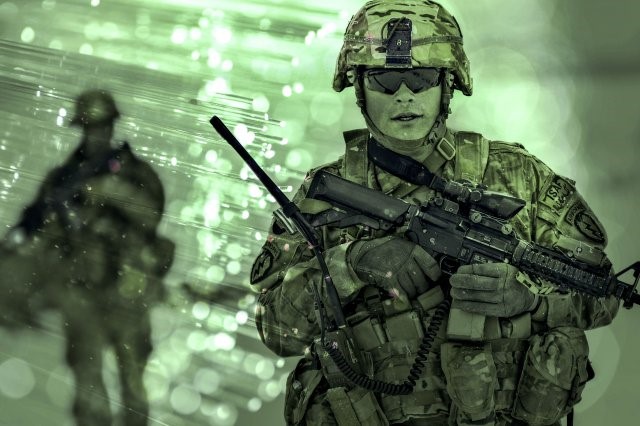PISA
A system to help soldiers maintain situational awareness
Physiological Index of Situation Awareness (PISA)
Our unobtrusive, multimodal, and real-time PISA system monitors Soldiers’ evolving situational awareness (SA) and determines when lapses in SA occur.
Soldiers must operate in increasingly complex and chaotic battlespaces, partially due to unreliable intelligence, such as a false message from an adversary or information denied environments.
Our PISA system includes a minimally invasive multimodal sensor suite, including functional near-infrared spectroscopy (fNIRS), electroencephalography (EEG), eye tracking, and cardiac sensors. PISA uses Sherlock™, our open and extensible software and hardware platform, to process and fuse this sensor data and derive informative variables related to SA in real time. Then, we leverage our probabilistic modeling and machine learning expertise to estimate Soldiers’ cognitive state, such as SA.
“To perform their jobs and fight effectively, Soldiers must develop the necessary skills to attain and maintain SA for their assigned tasks. PISA includes breakthrough wearables sensors that decode the physiological correlates of Soldier’s evolving SA in real time, making it easier for commanders to intervene during a training simulation to tailor trainings to be optimally effective.”

Dr. Bethany Bracken
Principal Scientist and Principal Investigator on PISA
Our minimally intrusive PISA system presents a continuous measure of SA over time. PISA identifies new training opportunities to identify and address known SA problems during training simulations before they occur in the battlefield.

PISA uses multiple wearable sensors that monitor physiological and neurophysiological signals from Soldiers and make predictions about their level of situation awareness in real time (Photo Credit: US Army illustration)
Contact us to learn more about PISA and our other Cognitive Neuroscience and Sensor Processing and Fusion capabilities.
The material described herein is based on research sponsored by the U.S. Army Research Institute for the Behavioral and Social Sciences, Department of the Army (Contract No. W911NF-19-C-0072). The views expressed in this presentation are those of the author(s) and do not reflect the official policy or position of the Department of the Army, Department of Defense, or the U.S. Government.

